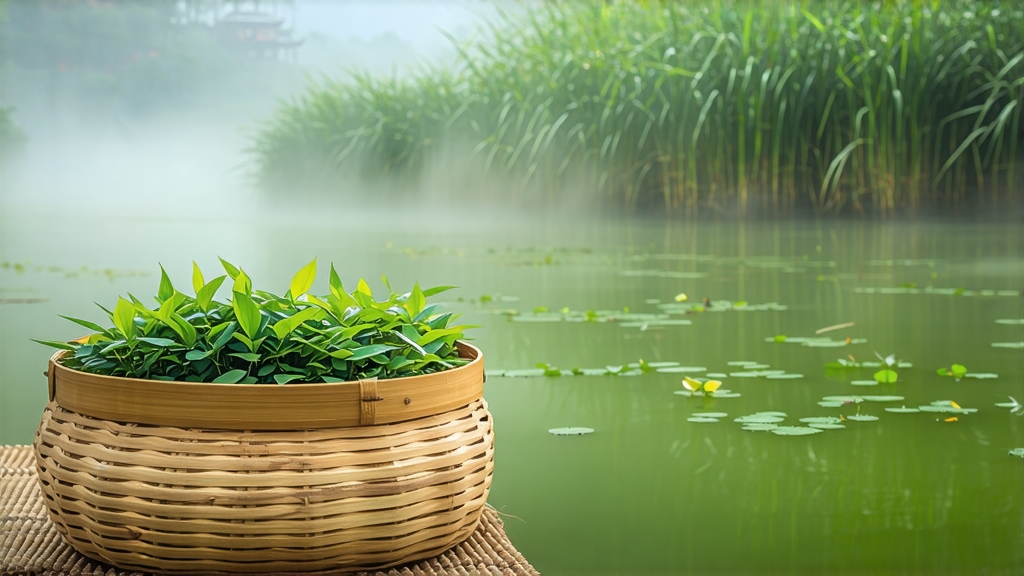
Among the six major families of Chinese tea, green tea is the most ancient and the most delicate, a liquid snapshot of spring preserved within hours of picking. Within this vast category, no name travels farther or carries more cultural weight than Longjing, literally “Dragon-Well,” a tea so revered that emperors once monopolized its first flush and poets compared its shape to the tender spear of a willow leaf. To understand Longjing is to understand how Chinese craftsmanship distills landscape, season, and myth into a single sip.
Historical roots
The earliest written record appears in Lu Yu’s Classic of Tea (760 CE), which mentions a tea from the “Stone Basin Peak” of West Lake. By the Song dynasty (960-1279), monks at the Longjing monastery were already pan-firing leaves in woks to stop oxidation, a technique that would define green tea for the next millennium. Legend claims that the Qianlong Emperor, while visiting Hangzhou, was so enchanted by the tea plucked before his eyes that he stuffed a handful into his sleeve and rushed back to Beijing, accidentally crushing the leaves flat against his imperial robe. Whether apocryphal or not, the story cemented Longjing’s status as gong cha—“tribute tea”—and 18 bushes growing beside the Dragon-Well were decreed off-limits to commoners. Those same bushes still stand today, fenced yet photographed by thousands of pilgrims who arrive each Qingming festival hoping to taste pre-rain spring.
Terroir and micro-climates
Authentic Longjing comes only from the hills rimming West Lake in Hangzhou, Zhejiang Province. Within this 20-square-kilometer zone, five micro-terroirs are officially recognized: Lion (Shi), Dragon (Long), Cloud (Yun), Tiger (Hu), and Plum (Mei). Lion Peak (Shi Feng) is the most coveted; its south-facing slopes trap morning mist that diffuses sunlight into a soft, jade-tinted glow. The soil is quartz-rich sandstone, acidic and fast-draining, forcing roots to struggle and concentrate amino acids—especially L-theanine—responsible for the tea’s famous sweetness. At 150-300 m elevation, daily temperature swings of 8-10 °C slow leaf growth, allowing more time for aromatic precursors to develop. The result is a leaf that is thin yet sturdy, jade green on the face and pale jade on the reverse, with a faintly serrated edge that experts can read like a fingerprint.
Cultivars and grades
While the original Longjing qunti zhong (“group variety”) still exists, most commercial plantings rely on three clonal selections released since the 1980s: Longjing #43, Zhongcha 102, and the early-sprouting Wuniuzao. Longjing #43 dominates because it buds 7-10 days earlier than the heirloom strain, yielding a more consistent spring harvest. Leaves are smaller, more uniform, and produce a brighter liquor, but old-school connoisseurs insist the qunti zhong offers deeper “orchid fragrance” and a longer, rock-sugar finish. Grading follows both pluck standard and picking date. Pre-Qingming (yuqian) leaves—picked before the solar term Qingming around April 4—contain the highest concentration of soluble sugars and fetch prices exceeding 10,000 yuan per 500 g. Mingqian (“before the rain”) refers to the following two weeks, still premium but slightly less delicate. After Grain Rain (April 20), leaves grow coarse and are classified simply as “grade one, two, or three,” destined for everyday consumption rather than gifting.
Craftsmanship: the art of pan-firing
Within minutes of plucking, baskets of one-bud-one-leaf shoots are carried to the village workshop where they are spread 2 cm thick on bamboo trays to wither for 2-3 hours, reducing moisture from 75 % to 65 %. What follows is the defining step: hand pan-firing in a cast-iron wok heated to 80-100 °C. Ten distinct hand motions—grasp, shake, rub, throw, press, buckle, grind, turn, buckle again, and finally straighten—must be executed in a 25-minute choreography. The master’s palm reads the leaf’s elasticity like a baker sensing dough; too hot and the enzymes die, too cool and grassy notes linger. When moisture drops to 20 %, leaves are winnowed, cooled, then returned to a cooler wok (60 °C) for a second, 20-minute “refining